Wine glasses are a must for every wine tasting. They magnify the wine, reveal its aromas and are available in all shapes and sizes. In this article, we will introduce you to this essential element in the world of wine.
The Short History of the Wine Glass
The wine glasses as we know them today did not appear until the beginning of the 14th century. At the time, they were a reflection of the Venetian know-how of the island of Murano, which exported them all over Europe.
After that, during the 18th century in France, people sometimes tasted several wines during the same meal. This is how in the 19th century glassware services became popular. Each glass then had its own use. Moreover, at that time the glass became more democratic and was no longer reserved exclusively for the bourgeoisie, its use became more common.
Furthermore, in the 20th century, Claus Riedel was the first to acknowledge a correlation between the shape of the wine glass and its influence on tasting. He then completely changed the style of wine glasses to blown, uncoloured and very thin glasses. After that, he launched the « Sommeliers » collection, the first series of glasses based on the style and character of each wine. In other words, this marks a turning point in glassware dedicated to wine. Nowadays, Riedel is still one of the world’s leading glass brands.
In the 1970s, the INAO wine glass became the reference glass for professional wine tastings. It is defined by a set of specifications from the French Association for Normalization (AFNOR) and receives its certification in 1971.

The structure of the wine glass
Three main elements form the wine glass: the stem, the foot and the bowl. Other elements, less known to the general public, have their importance. This is what we will see below.
Let’s start with the main elements:
- The stem, also known as the base, allows the glass to be balanced.
- The foot connects the stem to the glass container. It is this element that allows you to hold your glass during tasting.
- The bowl (also called chalice), represents the container and allows the drink to be poured inside.
Let’s move on to the next ones:
- The gob is the lower part of the bowl, which acts on the oxygenation of the wine. It can take different shapes (round, straight, etc.).
- The shoulder is the widest part of the bowl. It allows the development of the wine’s aromas.
- The chimney, the upper part of the bowl and narrower than the rest, prevents the aromas from escaping.
- Finally the rim of the bowl, where you put your lips, has an impact on the taste of the wine when tasting it.
It is all these elements, assembled together, that give the distinctive and recognizable shape of wine glasses.
Choosing your wine glass
During the tasting, 3 of our senses are activated: sight, smell and taste. And the wine glass plays a decisive role for each one. Some characteristics are particularly important to consider when choosing a glass.

- The transparency influences the visual analysis. Indeed, it is important to see the colour, the robe of the wine to fully appreciate the tasting.
- The size and shape of the glass which influence the gustatory and olfactory analysis. For example, with the diameter of the container larger than that of the opening, the aromas (volatile molecules) of the wine spread and reach the taster’s nose. Be careful however not to have an opening that is too closed because the aromas will not be perceived.
- Be careful when choosing the glass because its thickness also plays a role in the tasting. For an optimal olfactory analysis, the rim must be as thin as possible. The finer it is, the more the taste will run through your mouth.
There is a “universal” form: the INAO wine glasses we mentioned. They are characterized by a wide bowl and a narrowed opening. If you have small spaces, you can opt for INAO glasses that will suit all your tastings.
A few basic rules to follow when choosing and preserving your wine glasses
Of course you want to get the best of your wine tastings, so here are a few tips to succeed.
- Do not taste your wines in straight water glasses. Indeed, it is important to hold your glass by the foot, first to avoid unwanted fingerprints and most importantly, to avoid heating the wine when holding the glass by the bowl.
- Do not take tinted glasses, because seeing the colour of your wine is part of the visual analysis of a tasting.
- Wash the glasses only with warm water, without any detergent or soap. The dishwasher should also be avoided.
- Wipe the glasses immediately after washing them to avoid leaving traces of limescale.
- In terms of glass size, there is no need to use XXL size glasses, which are harmful for the aromas of the wine during tasting.
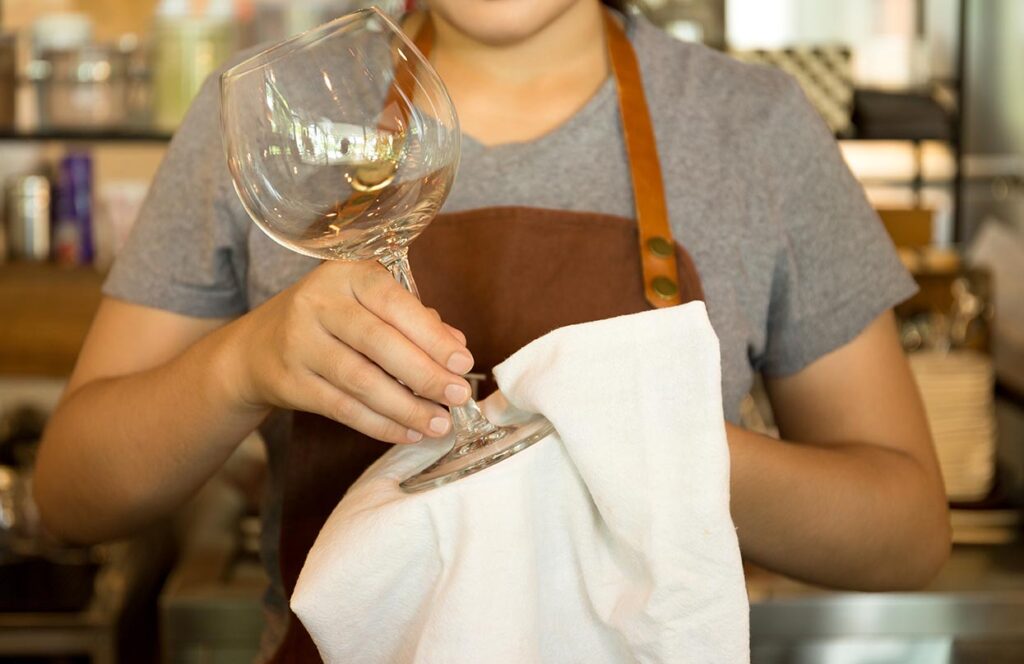
Characteristics according to the wines
There are dozens of different types of wine glasses. But if you only need to keep 3 at home, choose a red wine glass, one for white/rosé and one for sparkling.
Red wine glasses
The red wine glass should be large enough to allow good aeration in order to release all the aromas. Besides being wider towards the bottom, the top of the glass must be narrower in order to appreciate all the aromas at the nose and in the mouth. When serving, do not exceed 50% of the glass.
Also, if you drink a concentrated wine, aeration is all the more important because its aromas are less volatile (aromas of ripe fruit and spices in particular).
White and rosé wine glasses
The white/rosé wine glass has the same shape as the red wine glass, i.e. a rather wide container, but a more flared top. In terms of size, it must be smaller in capacity in order to renew the wine (it is important to keep the wine fresh). Also, in order to keep it always fresh, it should not be filled to more than a third. Indeed, this will allow the wine in the glass to be renewed more frequently.
Sparkling wine glasses
The sparkling wine glass must be tulip-shaped or flute-shaped to retain the effervescence of the wine. Be careful with glasses that do not retain the bubbles. When serving, you can fill your glass to two thirds of its capacity.
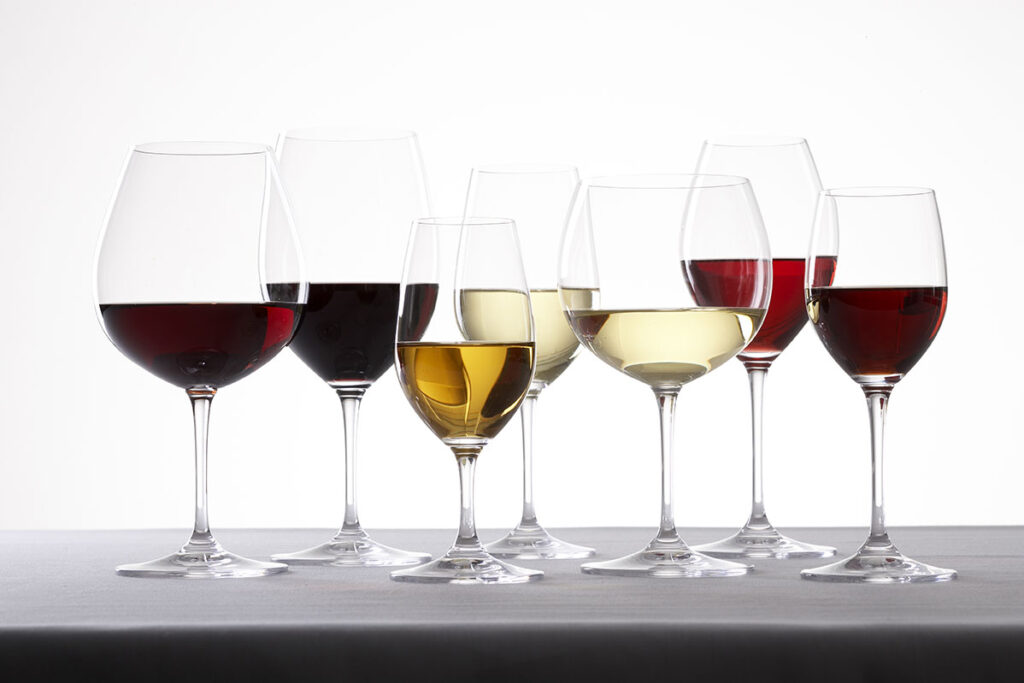
Glasses according to the age of the wine
For an old wine, choose a narrow glass opening that will trap the aromas in the glass. On the contrary, with a young wine, prefer a slightly wider opening to allow the aromas to be released more quickly when the wine comes into contact with air and a wide bowl to facilitate aeration. You can also use the Aveine Smart Wine aerator to get a precise and mesured aeration.
Glasses according to wine regions
Each wine-growing region is “represented” by a glass that allows to taste and enjoy all the aromas of the wine it produces. These include the representative Burgundy bowl, the slim shape of the Bordeaux, the Champagne flute, or the green foot of Alsace.
Conclusion
If there is a suitable glass for every type of wine, there is a reason. Indeed, the shape of the glass can have a very important impact on the perception of the taste of the wine. It could be interesting to see if the same wine will taste the same depending on the glass in which it is served. This is why the choice of glass is one of the essential elements of a successful tasting, especially for aeration. For example, try to drink an excellent wine served in a plastic cup (not to mention the impact on the environment). Chances are it will lose its character!
French version available here.


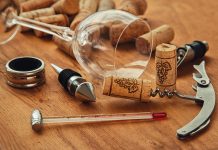
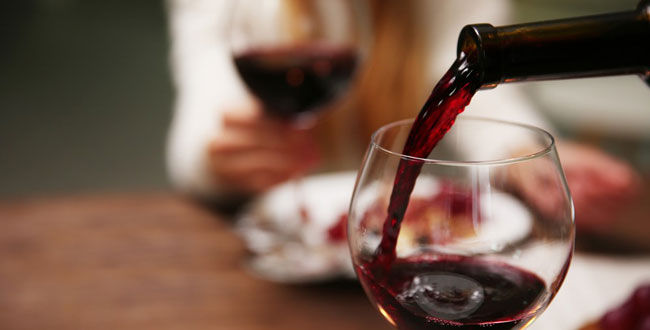


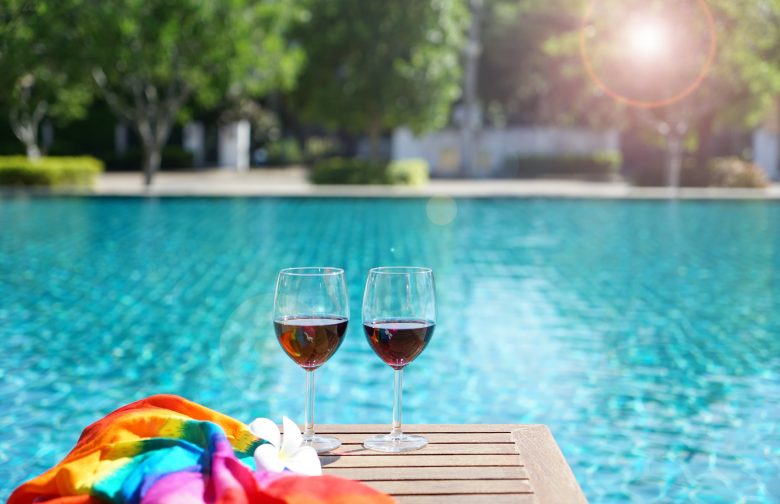
Thanks for sharing the great information on wine glasses. I can understand a wine glass is normally more narrow at the top for two reasons: so the wine doesn’t end up on the floor when swirling. Also it helps to collect the unlocked aromas and makes it easier for us to smell them.
The blog was very insightful, Thank you for sharing it with us wine lovers.